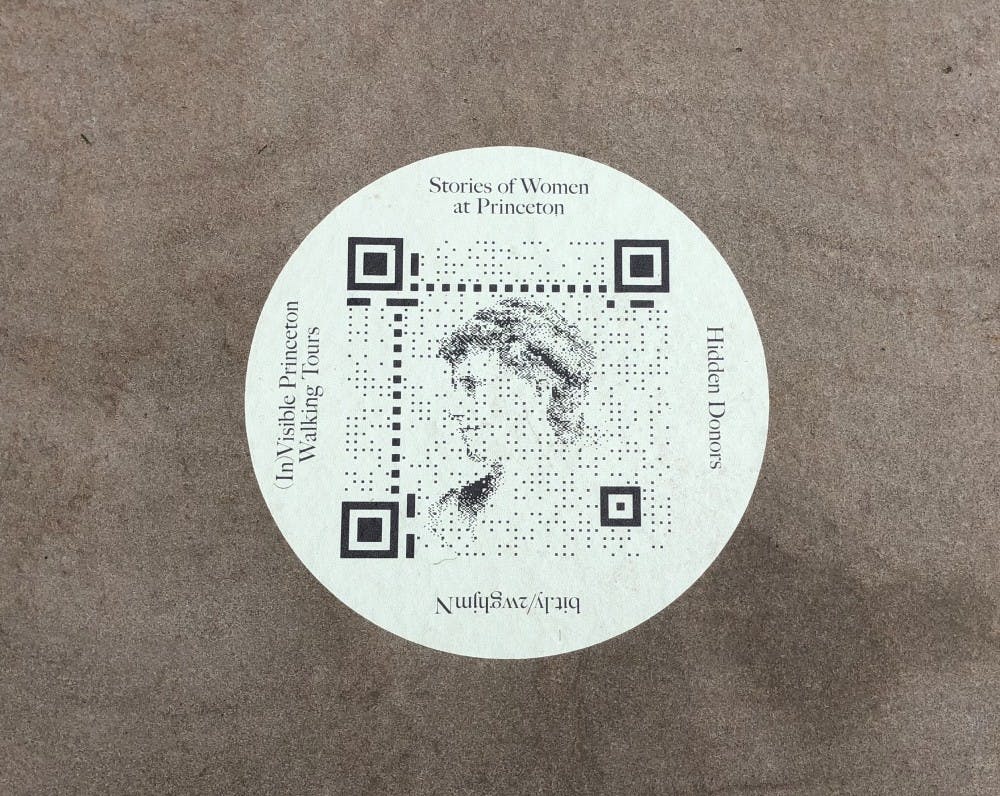Circular colored stickers have been carefully placed on the ground all over campus. They display QR codes inlaid with images — images of graduation hoodings, FitzRandolph Gate, freed African-American laborers, and more. When scanned with a mobile device, each code reveals a story connected to the University’s history.
These stickers are part of a series of tours, named “(In)Visible Princeton,” launched by the University. (In)Visible Princeton aims to tell some of the lesser-known stories of the University’s history and traditions.
“[These tours] are a way of including marginalized voices that haven’t historically been included in the University’s history and bringing them back into the historical narrative,” project specialist Abby Klionsky ’14 said.
In the spring of 2016, a trustee report called for the University to diversify the art and iconography around campus. That summer, the Campus Iconography Committee was created with this aim in mind. Chaired by executive vice president Treby Williams ’84 and Department of Anthropology chair Carolyn Rouse, the committee searched for a way to integrate visual cues on campus that serve to give a more in-depth interpretation of the University’s history.
For instance, one stop on the tour features an interview with Vera Marcus ’72, the first known female African American non-transfer student to obtain an undergraduate degree from the University. Marcus did not maintain connections with the University upon graduating. According to Klionsky, working on the interview had given Marcus a “new sensation” — one of inclusion.
Another stop in front of Alexander Hall tells another important story: The building once held 1,200 people attending a memorial service for Martin Luther King, Jr. after the Association of Black Collegians convinced the University to cancel classes for the day because of the event.
At each stop, those on the tour can scan the QR code that will reveal the significance and story behind a certain site through audio narration, text, and other forms of media. The tours can be accessed remotely by those who are not on campus.
“We thought it was important to make these as easy to access as possible, whether you’re on campus or whether you’re not,” said Debby Foster ’92, the senior associate director for administrative planning.

Four tours were launched as part of the series, each tour with a specific theme: African American Life at Princeton, “Firsts” at Princeton, Traditions at Princeton, and Women at Princeton.
Information on the tours came from both University archives and compiled other sources. The project also found partners in several University centers and departments and relied on research from the Princeton & Slavery project.
Klionsky also relied on a senior thesis from 2015 that had focused on black student activism at the University. The student identified many of the photos used for stops.
In addition, the University is working to expand its portrait collection to better represent the diversity of the University community, as well as enhancing public spaces to be more welcoming and inclusive.









